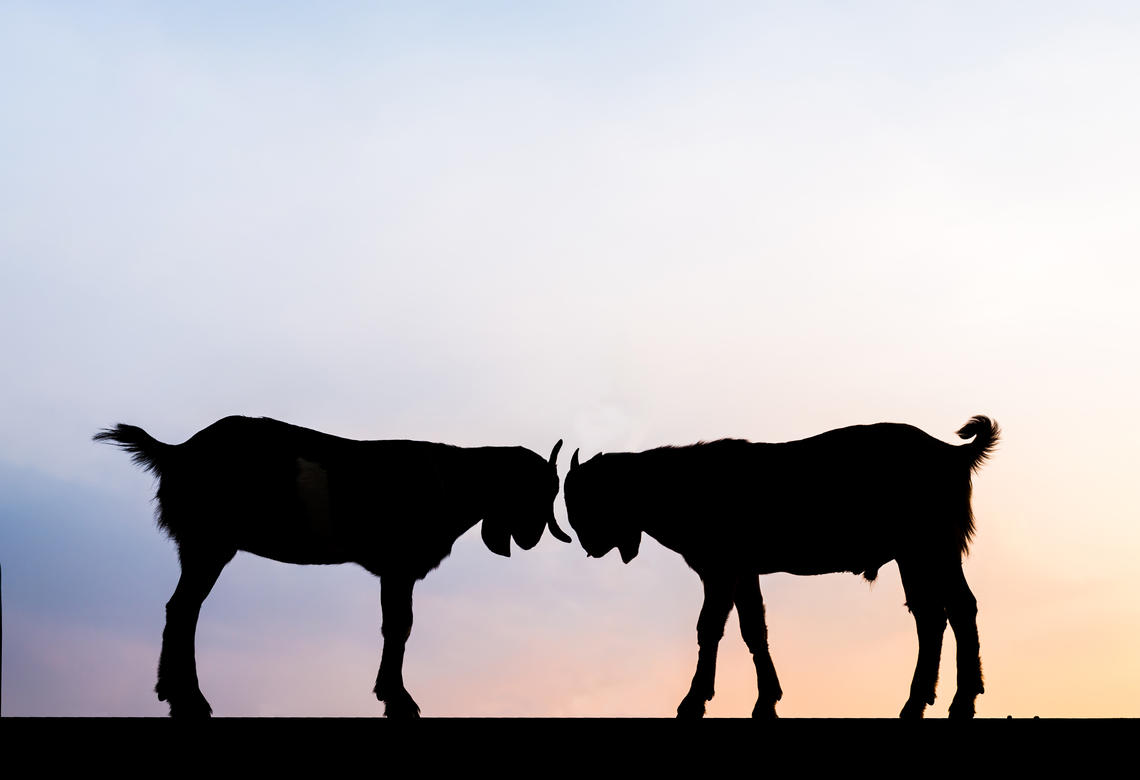March 25, 2019
University of Calgary researchers create physics model of society

University of Calgary physicists have created a model that uses methods from physics to explore how social hierarchies in human and non-human animal societies form, evolve and collapse over time.
The model, published in a new study by Faculty of Science researchers working in the field of “sociophysics,” shows there need not be a gene or intrinsic differences at birth that determines hierarchy, as measured by social status. Rather, their model shows that hierarchy emerges by self-organization based solely on the interactions of pairs of individuals.
“We created a simple physics model of a society’s formation and evolution in time,” says study lead author Joseph Hickey, a PhD student in the Complexity Science Group in the Department of Physics and Astronomy. “Our model explores under what conditions the society retains its hierarchal structures for a long time versus becomes unstable and collapses.”
The mathematical model’s predictions about the evolution of social hierarchy were consistent with observations from the animal world, of the interactions in a mountain goat herd studied over four successive summers, says Dr. Jörn Davidsen, associate professor of physics and astronomy in the Department of Physics and Astronomy’s Complexity Science Group.
“Our model allows us to make predictions about social hierarchy that are consistent with animal interaction data and the evolution of hierarchy over a number of years,” Davidsen says.
The researchers say more interdisciplinary research is needed to be able to actually measure and quantify the model parameters in an actual human society in order to compare hierarchal structures across societies, such as those in different countries, and predict whether these hierarchies will be stable or eventually collapse.
The researchers’ study, Self-Organization and Time-Stability of Social Hierarchies, is published in the peer-reviewed journal PLOS One.
Applying physics to social systems
Physics has developed many concepts and methods for studying the different constituents in a system, such as atoms interacting within a crystal, Davidsen notes. Such methods are also used to describe the macroscopic features of a system, such as whether a material is magnetic or non-magnetic and why.
Sociophysics applies these concepts and methods to study complex social systems.
Hickey, who did the work as part of his PhD with Davidsen, has an interest in societal structures and the level of inequality in a society, partly arising from his past work in campus politics and civil liberties advocacy. He wanted to apply sociophysics to explore how social hierarchies form and change.
“Social hierarchy is a fundamental characteristic of essentially all social animals, including humans,” he says. “One’s position, or ranking, in the social hierarchy influences all aspects of the individual’s life,” such as health, access to resources, reproductive success and influence in society.

The model’s predictions about the evolution of social hierarchy were consistent with a goat herd.
Model correlates to real-world societies
Hickey and Davidsen built a simple model for establishing and ranking on a continuum social hierarchy based on “fights,” or status-defining interactions, between pairs of randomly chosen individuals. The probability of “winning” depends solely on the relative societal status of the participants.
"The long-term outcomes of such exchanges resemble observations in real-world human and animal societies, using household income distributions in Canada and the U.S. as a proxy for status in human society,” Hickey says.
Their model involves two parameters, one which controls the amount of status at stake in an interaction, and the other which controls the probability that the higher-status individual gains from the exchange.
Using a large database from the mountain goat study, the researchers found that certain values of their model parameters produce win and loss ratios matching those of the mountain goats and persisting over multiple years.
This allows the prediction of the time-scale over which the society is expected to retain its structure. In the case of the mountain goats, the model predicts a highly unequal distribution of status that changes very slowly.
“Basically if you have low values of these two parameters, your society will remain stable for longer periods of time,” Hickey says.” But if either of these parameters is increased too much, you enter a runaway regime where structure is lost rapidly.
“Our study shows how simple physics models can provide fundamental insights about societal inequality and societal stability.”
The researchers are supported by the Natural Sciences and Engineering Research Council of Canada, including Hickey’s NSERC Alexander Graham Bell Canada Graduate Scholarship (Doctoral). Davidsen is a Humboldt Research Fellow and a member of the Hotchkiss Brain Institute.
